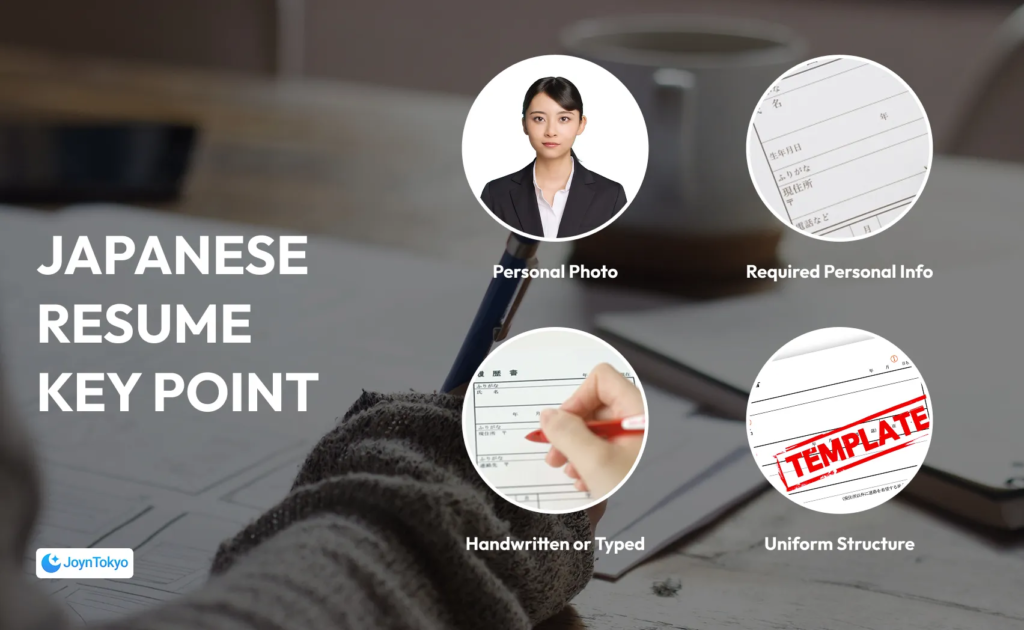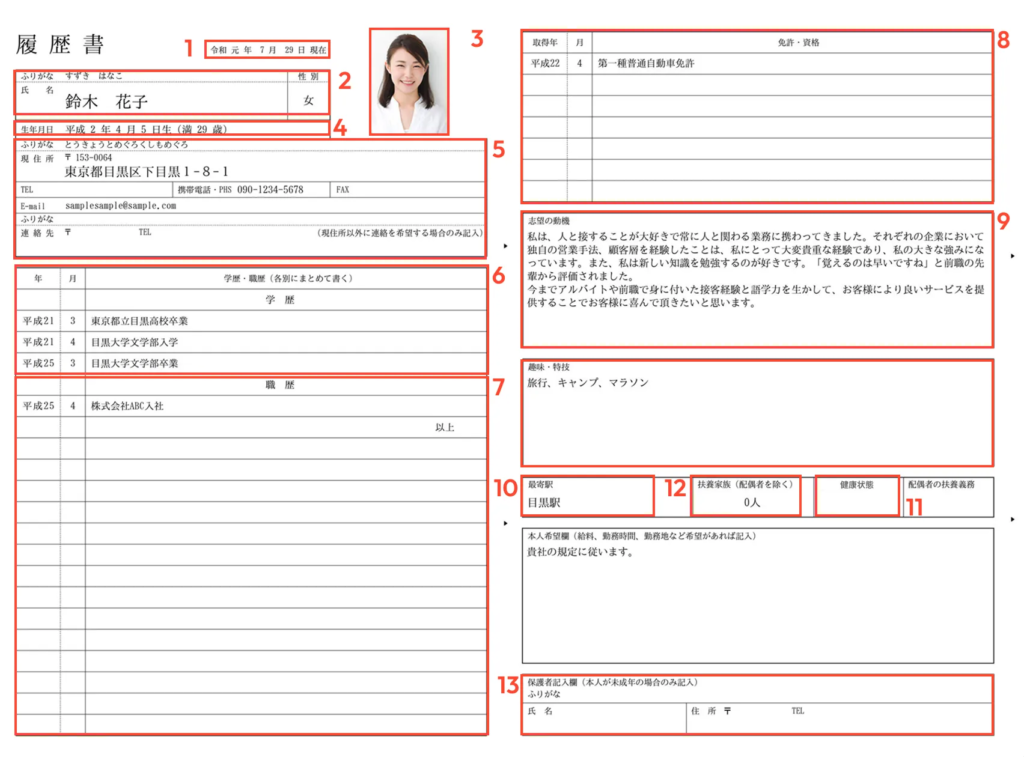At first glance, the Japanese resume (or CV) may appear to follow a straightforward template. Yet it carries nuances and cultural expectations that can significantly impact your career opportunities. Whether you are transitioning from overseas or already living in Japan, grasping the fundamentals of the resume format in Japanese will place you ahead of the competition. By understanding what is required, how to lay out your professional history, and which elements need extra attention, you will be well-equipped to submit a polished application.
This article outlines key distinctions, steps, and strategies to ensure your resume meets local hiring standards and showcases your strengths in the Japanese job market.
Understanding the Japanese Resume Format (Rirekisho)
Japanese resumes—often referred to as 履歴書 (rirekisho)—follow a more standardized structure than many Western resumes. You will typically see mandatory fields such as your full name with furigana, a passport-style photo, birth date, and address. Adhering to these conventional requirements shows employers that you respect local norms, which can make you a more appealing candidate.
Another important aspect is balancing clarity, conciseness, and completeness. Japanese recruiters place great emphasis on detail-oriented resumes, so each piece of information should be accurate and neatly organized. Whether you are using an official store-bought template or a digital layout, pay close attention to instructions about photograph size, layout, and required personal information.
Japanese Resume vs Western Resume: Key Differences

Many Japanese companies still request a formal photograph, usually placed at the top of the resume, and applicants are also expected to include personal details such as birth date, address, and in some cases marital status. While typed resumes are becoming more common, some traditional employers continue to value handwritten submissions, which are seen as a sign of effort and sincerity.
Regardless of the method used, following the uniform rirekisho format is important, as it demonstrates respect for local conventions and signals to employers that you can adapt to Japanese workplace expectations.
Essential Sections of a Japanese Resume

While the exact order can vary slightly, the following sections appear in most rirekisho. Keep them concise yet comprehensive, as brevity and neat formatting are highly valued in Japan.
1. Date (hizuke / 日付)
Place the submission or finalization date in the designated box, often in the upper right. Despite seeming minor, ensuring accuracy here underscores your attention to detail.
2. Full Name (shimei / 氏名) & Furigana
Write your full name in kanji (if applicable) or Roman letters, and add furigana (often in katakana) above for proper pronunciation. Match all official documents if you have multiple names or unusual spellings.
3. Photo (shashin / 写真)
A professional, passport-style headshot against a plain background is standard. Formal attire is typical. Many people get these taken at photo booths found near train stations; be sure you follow the specified size.
4. Contact Information (genjyusho / 現住所・renrakusaki / 連絡先)
List your current address, phone number, and email. Accuracy is crucial, as companies will use this info to arrange interviews or clarify application details.
5. Date of Birth (seinengappi / 生年月日) & Age (nenrei / 年齢)
Include your birth date in the order Year/Month/Day (e.g., 1990/05/23). Some forms may require the Japanese era format (e.g., Reiwa○年), so follow instructions carefully. Although some global resumes skip age, Japanese companies generally expect it.
6. Education History (gakureki / 学歴)
Present your academic background from earliest to most recent, including institution names, fields of study, and dates of enrollment. Keep descriptions brief but precise.
7. Work History (shokureki / 職歴)
Chronologically list your professional experience immediately after your education history. Include company names, positions, responsibilities, and dates of employment. If space is limited, focus on the most relevant achievements.
8. Licenses & Qualifications (menkyo / 免許・shikaku / 資格)
Detail certifications like JLPT levels, driving licenses, or relevant professional credentials. Include acquisition dates if possible. Even if a license is not explicitly required, listing it may strengthen your application.
9. Reason for Application (shibodoki / 志望動機)
Many templates provide a space for your motivation. Align your goals and aspirations with the company’s values. Show genuine interest in how you can contribute to their mission.
10. Commute Time (tsukinjikan / 通勤時間)
It may seem unusual, but many Japanese companies value punctuality and work-life balance, so indicating your commute time demonstrates practicality.
11. Health Status (kenkojyotai / 健康状態)
Some traditional forms still include a section for general health. A concise note such as “Excellent” or “Good” often suffices. If you prefer not to share personal details, check if you can state a simple summary.
12. Dependents & Family (fuyokazokusu / 扶養家族数) [Optional]
More conservative templates occasionally request the number of dependents. Answer honestly if asked, and be prepared to explain if it impacts your availability.
13. Personal Notes / Other Information (honinkibokinyuran / 本人希望記入欄 or sonota / その他)
Use this optional space to add details that don’t fit elsewhere, such as availability, willingness to relocate, or special considerations. Stay concise and relevant.
Tips for Writing a Successful Japanese Resume
Double-Check Language: If the job requires fluent Japanese, ensure your writing reflects that level. If the role is more English-focused, you may include an English resume alongside the Japanese version. For some jobs that require English language abilities, this may be required.
Highlight Cultural Fit: Emphasize experiences that show you understand and appreciate Japanese workplace values (e.g., teamwork, diligence, continuous improvement).
Keep It Concise: Japanese employers often value clarity over lengthy detail. Focus on achievements and relevant skills.
Reason for Applying: Incorporate a polite, written statement aligning your ambitions with the company’s mission.
Review for Accuracy: Misspellings or mismatched dates can lead to rejection.
How to Polish and Finalize Your Rirekisho
Once you’ve completed all sections, spend time refining and verifying the details. Even a small inconsistency can be detrimental. This final review underscores your professionalism and respect for Japanese business norms.
Reviewing and Refining Your Japanese Resume
- Check Consistency: Ensure all dates are formatted uniformly.
- Confirm Names and Spelling: Verify institution names, job titles, and Japanese terms.
- Seek Feedback: Ask a native speaker, mentor, or career advisor to review. You can also refer to official guidelines from government-run job placement services (like Hello Work) for accuracy.
Looking Ahead: Building Your Career in Japan
Creating a polished rirekisho is just the first step in navigating Japan’s job market. Equally important is adapting to local customs, communication styles, and business practices. By following a recognized Japanese resume format and clearly articulating your unique background, you’ll prove your adaptability and respect for local standards.
Beyond the resume itself, showcase a spirit of continuous improvement and enthusiasm for collaboration, which are qualities highly prized in many Japanese workplaces. A well-crafted application, combined with professional conduct, can elevate your job search and set you on a path to lasting success in Japan.







